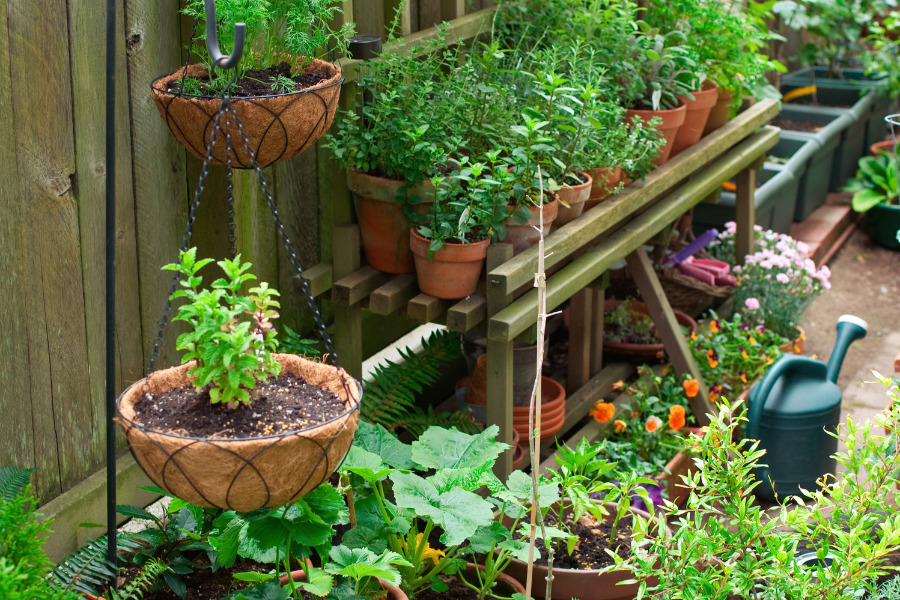
A thriving container garden can be a delightful addition to your home, patio, or balcony, offering a versatile and space-saving solution for urban dwellers, apartment residents, or anyone short on gardening space. With the right techniques and a touch of creativity, container gardens can yield an abundance of vibrant flowers, fresh herbs, and even delicious vegetables. In this article, we will explore the essential elements and best practices for creating a flourishing container garden that not only enhances your living space but also brings you joy and satisfaction.
Whether you are new to gardening or a seasoned green thumb, container gardening opens up a world of possibilities, allowing you to experiment with various plant combinations and designs. From choosing the right containers and selecting suitable plants to mastering proper watering techniques and pest control, this comprehensive guide will provide you with the knowledge and tips you need to create a thriving container garden that is as visually appealing as it is productive. So, let’s embark on this gardening adventure and watch your container garden come to life!
Choose the Right Container

Size and Material
The right container is essential to the success of your urban container garden. Consider the size and material of the container to ensure it can support the growth and development of your plants. Larger containers hold more soil, allowing for greater root growth and a more stable environment for your plants. Select containers made from durable materials, such as terracotta, wood, or plastic, which can withstand varying weather conditions.
Location and Weight
When choosing a container, also consider the location of your garden and the weight of the container. If you’re placing your garden on a balcony, for example, ensure the containers are not too heavy to be safely supported. Lightweight materials like plastic or fiberglass are great options for these situations. Moreover, consider how easily the containers can be moved if you need to relocate your garden or bring plants indoors during extreme weather.
Drainage
Proper drainage is crucial for the health of your container plants, as it prevents root rot and other issues caused by waterlogged soil. When choosing a container, ensure it has adequate drainage holes at the bottom. If the container you like doesn’t have holes, you can create your own using a drill or add a layer of gravel or pebbles at the bottom to facilitate drainage. Keep in mind that some materials, like terracotta, are more porous and allow for better aeration and drainage compared to plastic or metal containers. Always use a well-draining potting mix to further promote healthy root growth and prevent water-logging. Additionally, you can use saucers or trays beneath your containers to catch excess water, protecting your surfaces and preventing water waste. By paying attention to these factors, you can create an optimal environment for your container plants to thrive.
Select Suitable Plants
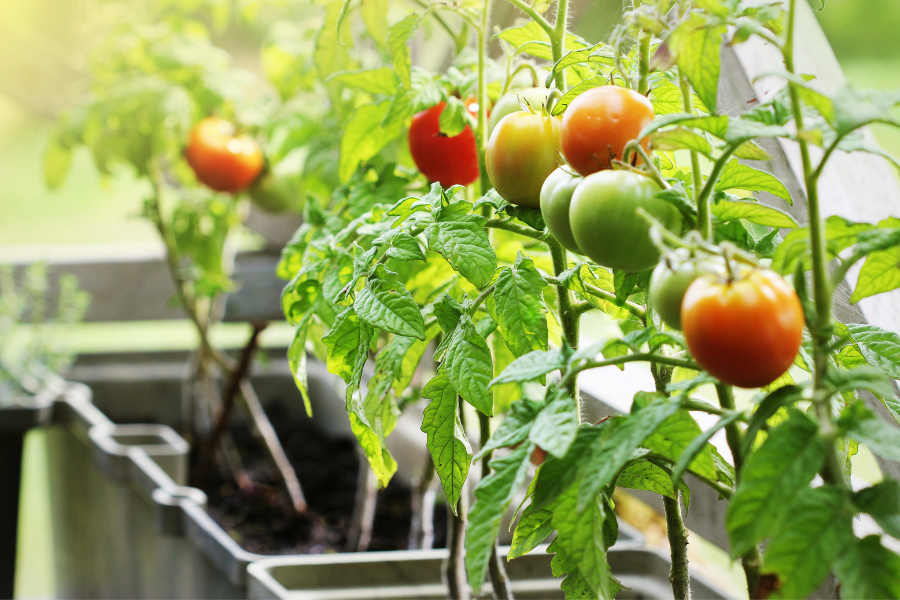
The success of your container garden greatly depends on choosing the right plants. When selecting plants for your garden, consider the following factors:
Size and Growth Habit
Select plants that are well-suited for container gardening, taking into account their mature size and growth habit. Avoid plants with invasive roots or those that grow too large for the containers you have chosen. Some popular container plants include herbs, dwarf fruit trees, compact vegetables, and ornamental plants like succulents or flowering annuals.
Light Requirements
Ensure that your chosen plants have similar light requirements, as this will make it easier to position your containers in the optimal location. Group plants that need full sun, partial shade, or full shade together to provide them with the appropriate light levels they need to grow and flourish.
Hardiness and Climate
Consider your local climate and the hardiness of the plants you choose. Opt for plants that can withstand the temperature fluctuations in your area, as containers can heat up or cool down more quickly than the ground. Also, take note of the USDA hardiness zones for each plant to ensure they can survive in your region.
By carefully selecting plants that are well-suited to container gardening, you can create a thriving and visually appealing garden that will be easier to maintain and enjoy.
Use High-Quality Potting Mix
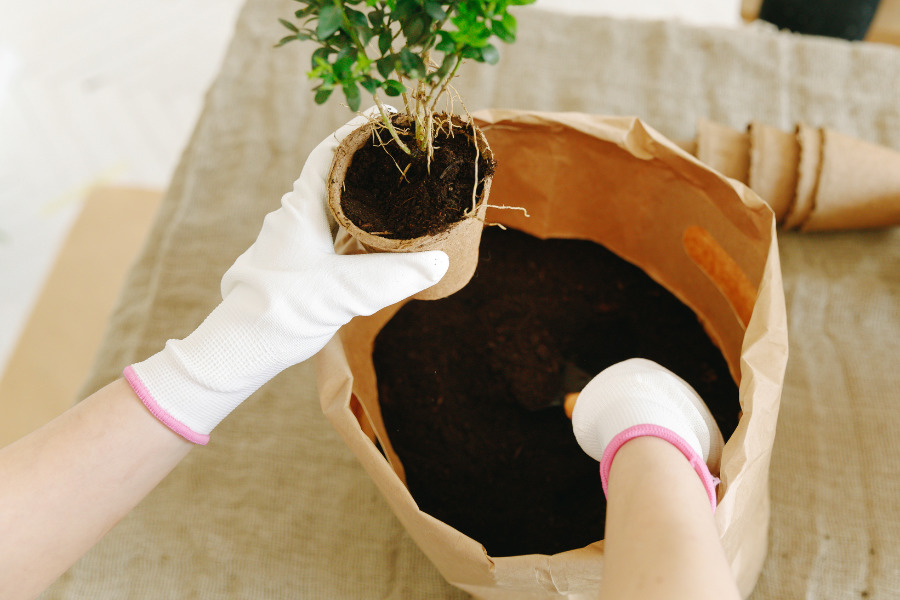
Choosing the right potting mix is crucial for the health and success of your container garden. A high-quality potting mix will provide your plants with the nutrients, moisture, and aeration they need to grow and thrive. Here are some tips for selecting and using a potting mix:
Components
A good potting mix should be well-draining, yet capable of retaining moisture. Look for a mix that contains a blend of ingredients such as peat moss or coco coir, vermiculite or perlite, and compost or aged bark. This combination will help to provide proper drainage, aeration, and nutrient retention.
Soil-less vs. Garden Soil
Avoid using garden soil in your containers, as it can become compacted and hinder root growth. Instead, opt for a soil-less potting mix, which is specifically designed for container gardening. Soil-less mixes are lightweight, well-draining, and provide a consistent growing environment for your plants.
Fertilizer and Amendments
Some potting mixes come pre-amended with slow-release fertilizers or other nutrients. While these can be convenient, it is essential to know the specific needs of your plants and adjust the mix accordingly. You may need to add additional amendments, such as lime to raise pH or sulfur to lower it, depending on the preferences of the plants you are growing.
Using a high-quality potting mix will set the foundation for a successful container garden, allowing your plants to access the nutrients and moisture they need to grow strong and healthy.
Proper Watering Techniques

Understand Plant Water Requirements
Different plants have varying water needs, so it’s essential to research the specific requirements of each plant in your container garden. Some plants, like succulents, prefer drier conditions, while others, such as ferns, need consistently moist soil. By understanding the water requirements of each plant, you can tailor your watering schedule accordingly to ensure optimal growth.
Monitor Soil Moisture and Water Appropriately
To determine when your plants need water, check the moisture level of the potting mix by sticking your finger an inch or two into the soil. If it feels dry at that depth, it’s time to water. Over time, you’ll develop a sense of when your plants need water based on the weight of the container and the appearance of the soil surface. When watering, make sure to soak the potting mix thoroughly so that water reaches the entire root system. This may mean watering until water runs out of the drainage holes at the bottom of the container. However, be careful not to overwater, as this can lead to root rot and other issues.
Choose the Right Watering Tools
Using appropriate watering tools, such as a watering can with a long spout or a hose with a gentle spray nozzle, helps ensure that water is applied evenly and directly to the soil, minimizing splash and runoff. For larger container gardens, consider using a drip irrigation system for more consistent and efficient watering. By employing the right tools and techniques, you can maintain the proper balance of moisture in your container garden and promote healthy plant growth.
Fertilizing and Feeding Your Plants
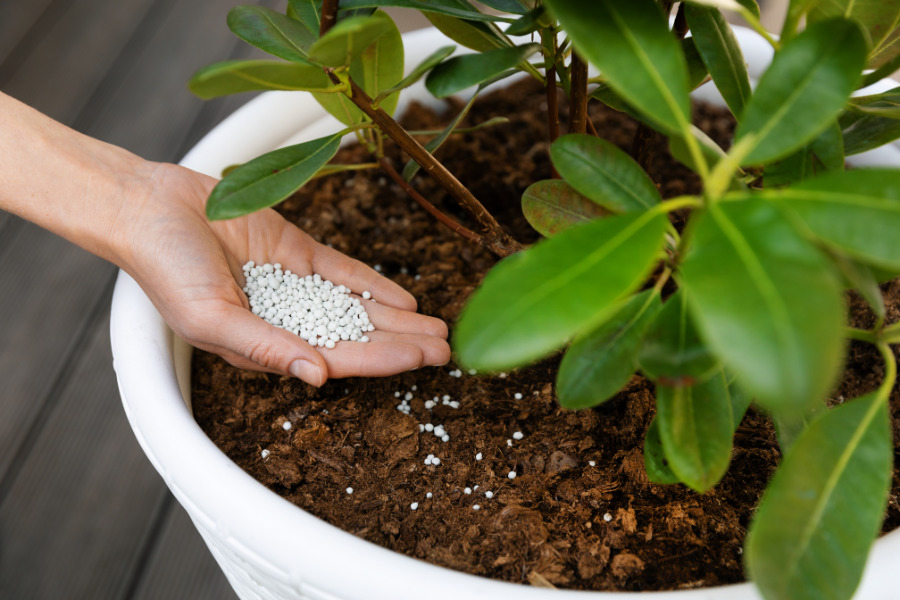
Importance of Fertilizing Container Plants
Container plants require regular fertilization because they are grown in a limited amount of soil, which can become depleted of nutrients over time. In addition, the frequent watering that container plants require can wash away essential nutrients. By providing your plants with the right balance of nutrients, you can encourage healthy growth, vibrant blooms, and higher yields in edible plants.
Types of Fertilizers and Timing
There are various types of fertilizers available, including granular, slow-release, and liquid formulations. Each type has its benefits and drawbacks, so it’s essential to choose the one that best suits your container garden. Granular fertilizers are typically applied at planting time and can be supplemented with liquid fertilizers throughout the growing season. Slow-release fertilizers are applied less frequently but provide a steady supply of nutrients over an extended period. Liquid fertilizers can be applied with every watering or as needed, depending on the specific product and the needs of your plants. Always follow the manufacturer’s guidelines for application rates and timing to avoid over-fertilization, which can harm your plants.
Proper Application of Fertilizers
When applying fertilizer to your container garden, it’s essential to distribute it evenly throughout the potting mix to ensure that all of the plant’s roots have access to the nutrients. For granular and slow-release fertilizers, work them gently into the top layer of soil, being careful not to damage the roots. For liquid fertilizers, mix them with water according to the package instructions and apply them directly to the soil around the base of the plant, avoiding the foliage to prevent burns. It’s also essential to monitor your plants for signs of nutrient deficiencies or over-fertilization, such as yellowing leaves, stunted growth, or weak stems. If you notice any of these symptoms, adjust your fertilization practices accordingly. Remember that it’s better to err on the side of under-fertilizing rather than over-fertilizing, as it’s easier to add more nutrients than to correct problems caused by excessive fertilization.
Pest and Disease Control
Pests and diseases can be a challenge in any garden, and container gardens are no exception. However, with some preventative measures and early detection, you can keep your plants healthy and thriving.
One of the best ways to prevent pests and diseases is to choose healthy, disease-resistant plants and inspect them for any signs of infestation before bringing them home. Additionally, practicing proper sanitation by cleaning containers, tools, and surfaces can help reduce the risk of introducing pests and diseases to your garden. If you notice any signs of infestation, such as chewed leaves, sticky residue, or unusual leaf spots, take prompt action to control the issue. This may involve using organic or chemical pesticides, as well as introducing beneficial insects like ladybugs and lacewings to help manage pests.
When it comes to diseases, prevention is key. Select disease-resistant plant varieties for your garden. Ensure proper spacing to promote air circulation, preventing fungal and bacterial diseases. Watering at the base of the plant, rather than overhead. This can also help reduce the risk of disease by keeping the foliage dry. When you spot signs of disease like discolored or wilted leaves, remove the affected parts. Dispose of them properly to prevent spreading to other plants. In some cases, it may be necessary to remove and discard the entire plant to protect the rest of your container garden.
Rotate and Refresh Your Container Garden
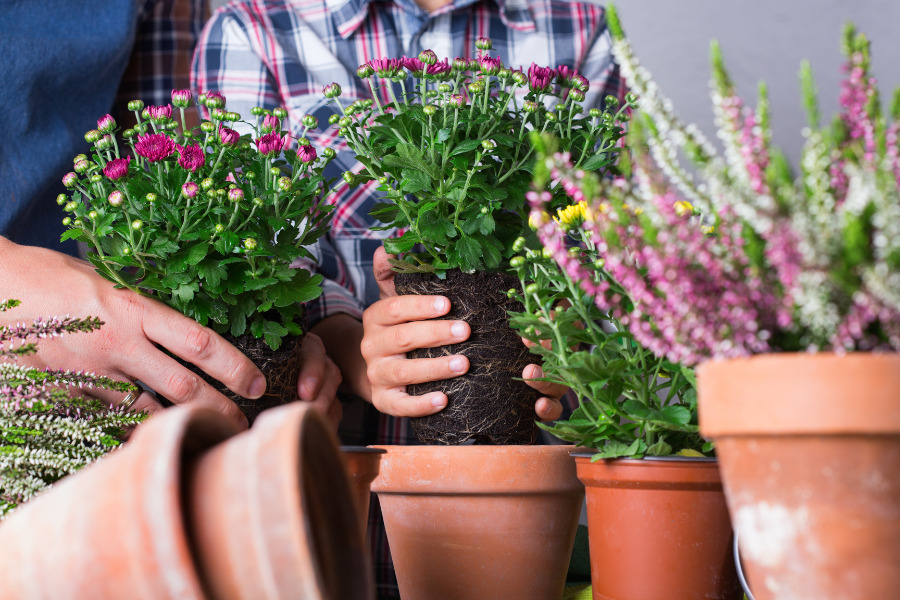
Just like any garden, a container garden benefits from regular rotation and refreshment. By changing out plants, rearranging containers, and introducing new varieties, you can keep your garden looking fresh and vibrant while also preventing the buildup of pests and diseases.
Rotate plants within your container garden by moving them to different positions, allowing them to receive varying amounts of sunlight and air circulation. This practice helps to maintain the overall health of your garden by minimizing the chance of pests and diseases taking hold in specific areas. Additionally, it’s essential to refresh your container garden periodically by replacing spent or unhealthy plants with new, vigorous ones. This not only keeps your garden looking its best but also ensures that your plants are receiving the nutrients they need to thrive. When refreshing your garden, take the opportunity to incorporate new plant varieties or colors to create visual interest and maintain a dynamic, ever-changing display.
By following these simple steps and being attentive to the needs of your plants, you can create a thriving, beautiful container garden that will be a source of joy and relaxation for years to come.
